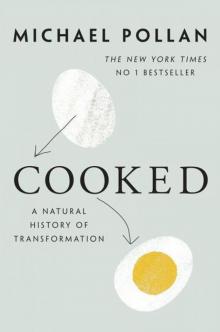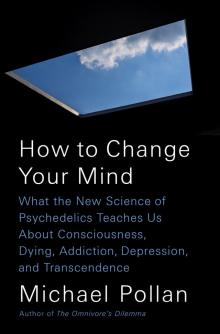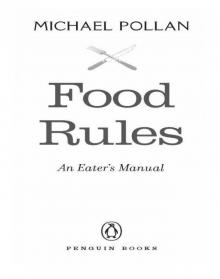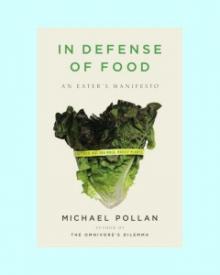- Home
- Michael Pollan
How to Change Your Mind Page 2
How to Change Your Mind Read online
Page 2
At first, I assumed she was dredging up some well-polished anecdote from her college days. Not the case. It soon became clear that the acid trip in question had taken place only days or weeks before, and in fact was one of her first. The assembled eyebrows rose. She and her husband, a retired software engineer, had found the occasional use of LSD both intellectually stimulating and of value to their work. Specifically, the psychologist felt that LSD gave her insight into how young children perceive the world. Kids’ perceptions are not mediated by expectations and conventions in the been-there, done-that way that adult perception is; as adults, she explained, our minds don’t simply take in the world as it is so much as they make educated guesses about it. Relying on these guesses, which are based on past experience, saves the mind time and energy, as when, say, it’s trying to figure out what that fractal pattern of green dots in its visual field might be. (The leaves on a tree, probably.) LSD appears to disable such conventionalized, shorthand modes of perception and, by doing so, restores a childlike immediacy, and sense of wonder, to our experience of reality, as if we were seeing everything for the first time. (Leaves!)
I piped up to ask if she had any plans to write about these ideas, which riveted everyone at the table. She laughed and gave me a look that I took to say, How naive can you be? LSD is a schedule 1 substance, meaning the government regards it as a drug of abuse with no accepted medical use. Surely it would be foolhardy for someone in her position to suggest, in print, that psychedelics might have anything to contribute to philosophy or psychology—that they might actually be a valuable tool for exploring the mysteries of human consciousness. Serious research into psychedelics had been more or less purged from the university fifty years ago, soon after Timothy Leary’s Harvard Psilocybin Project crashed and burned in 1963. Not even Berkeley, it seemed, was ready to go there again, at least not yet.
Third data point: The dinner table conversation jogged a vague memory that a few years before somebody had e-mailed me a scientific paper about psilocybin research. Busy with other things at the time, I hadn’t even opened it, but a quick search of the term “psilocybin” instantly fished the paper out of the virtual pile of discarded e-mail on my computer. The paper had been sent to me by one of its co-authors, a man I didn’t know by the name of Bob Jesse; perhaps he had read something I’d written about psychoactive plants and thought I might be interested. The article, which was written by the same team at Hopkins that was giving psilocybin to cancer patients, had just been published in the journal Psychopharmacology. For a peer-reviewed scientific paper, it had a most unusual title: “Psilocybin Can Occasion Mystical-Type Experiences Having Substantial and Sustained Personal Meaning and Spiritual Significance.”
Never mind the word “psilocybin”; it was the words “mystical” and “spiritual” and “meaning” that leaped out from the pages of a pharmacology journal. The title hinted at an intriguing frontier of research, one that seemed to straddle two worlds we’ve grown accustomed to think are irreconcilable: science and spirituality.
Now I fell on the Hopkins paper, fascinated. Thirty volunteers who had never before used psychedelics had been given a pill containing either a synthetic version of psilocybin or an “active placebo”—methylphenidate, or Ritalin—to fool them into thinking they had received the psychedelic. They then lay down on a couch wearing eyeshades and listening to music through headphones, attended the whole time by two therapists. (The eyeshades and headphones encourage a more inward-focused journey.) After about thirty minutes, extraordinary things began to happen in the minds of the people who had gotten the psilocybin pill.
The study demonstrated that a high dose of psilocybin could be used to safely and reliably “occasion” a mystical experience—typically described as the dissolution of one’s ego followed by a sense of merging with nature or the universe. This might not come as news to people who take psychedelic drugs or to the researchers who first studied them back in the 1950s and 1960s. But it wasn’t at all obvious to modern science, or to me, in 2006, when the paper was published.
What was most remarkable about the results reported in the article is that participants ranked their psilocybin experience as one of the most meaningful in their lives, comparable “to the birth of a first child or death of a parent.” Two-thirds of the participants rated the session among the top five “most spiritually significant experiences” of their lives; one-third ranked it the most significant such experience in their lives. Fourteen months later, these ratings had slipped only slightly. The volunteers reported significant improvements in their “personal well-being, life satisfaction and positive behavior change,” changes that were confirmed by their family members and friends.
Though no one knew it at the time, the renaissance of psychedelic research now under way began in earnest with the publication of that paper. It led directly to a series of trials—at Hopkins and several other universities—using psilocybin to treat a variety of indications, including anxiety and depression in cancer patients, addiction to nicotine and alcohol, obsessive-compulsive disorder, depression, and eating disorders. What is striking about this whole line of clinical research is the premise that it is not the pharmacological effect of the drug itself but the kind of mental experience it occasions—involving the temporary dissolution of one’s ego—that may be the key to changing one’s mind.
* * *
• • •
AS SOMEONE not at all sure he has ever had a single “spiritually significant” experience, much less enough of them to make a ranking, I found that the 2006 paper piqued my curiosity but also my skepticism. Many of the volunteers described being given access to an alternative reality, a “beyond” where the usual physical laws don’t apply and various manifestations of cosmic consciousness or divinity present themselves as unmistakably real.
All this I found both a little hard to take (couldn’t this be just a drug-induced hallucination?) and yet at the same time intriguing; part of me wanted it to be true, whatever exactly “it” was. This surprised me, because I have never thought of myself as a particularly spiritual, much less mystical, person. This is partly a function of worldview, I suppose, and partly of neglect: I’ve never devoted much time to exploring spiritual paths and did not have a religious upbringing. My default perspective is that of the philosophical materialist, who believes that matter is the fundamental substance of the world and the physical laws it obeys should be able to explain everything that happens. I start from the assumption that nature is all that there is and gravitate toward scientific explanations of phenomena. That said, I’m also sensitive to the limitations of the scientific-materialist perspective and believe that nature (including the human mind) still holds deep mysteries toward which science can sometimes seem arrogant and unjustifiably dismissive.
Was it possible that a single psychedelic experience—something that turned on nothing more than the ingestion of a pill or square of blotter paper—could put a big dent in such a worldview? Shift how one thought about mortality? Actually change one’s mind in enduring ways?
The idea took hold of me. It was a little like being shown a door in a familiar room—the room of your own mind—that you had somehow never noticed before and being told by people you trusted (scientists!) that a whole other way of thinking—of being!—lay waiting on the other side. All you had to do was turn the knob and enter. Who wouldn’t be curious? I might not have been looking to change my life, but the idea of learning something new about it, and of shining a fresh light on this old world, began to occupy my thoughts. Maybe there was something missing from my life, something I just hadn’t named.
Now, I already knew something about such doors, having written about psychoactive plants earlier in my career. In The Botany of Desire, I explored at some length what I had been surprised to discover is a universal human desire to change consciousness. There is not a culture on earth (well, one*) that doesn’t make use of certain plants to change the contents o
f the mind, whether as a matter of healing, habit, or spiritual practice. That such a curious and seemingly maladaptive desire should exist alongside our desires for nourishment and beauty and sex—all of which make much more obvious evolutionary sense—cried out for an explanation. The simplest was that these substances help relieve pain and boredom. Yet the powerful feelings and elaborate taboos and rituals that surround many of these psychoactive species suggest there must be something more to it.
For our species, I learned, plants and fungi with the power to radically alter consciousness have long and widely been used as tools for healing the mind, for facilitating rites of passage, and for serving as a medium for communicating with supernatural realms, or spirit worlds. These uses were ancient and venerable in a great many cultures, but I ventured one other application: to enrich the collective imagination—the culture—with the novel ideas and visions that a select few people bring back from wherever it is they go.
* * *
• • •
NOW THAT I HAD DEVELOPED an intellectual appreciation for the potential value of these psychoactive substances, you might think I would have been more eager to try them. I’m not sure what I was waiting for: courage, maybe, or the right opportunity, which a busy life lived mainly on the right side of the law never quite seemed to afford. But when I began to weigh the potential benefits I was hearing about against the risks, I was surprised to learn that psychedelics are far more frightening to people than they are dangerous. Many of the most notorious perils are either exaggerated or mythical. It is virtually impossible to die from an overdose of LSD or psilocybin, for example, and neither drug is addictive. After trying them once, animals will not seek a second dose, and repeated use by people robs the drugs of their effect.* It is true that the terrifying experiences some people have on psychedelics can risk flipping those at risk into psychosis, so no one with a family history or predisposition to mental illness should ever take them. But emergency room admissions involving psychedelics are exceedingly rare, and many of the cases doctors diagnose as psychotic breaks turn out to be merely short-lived panic attacks.
It is also the case that people on psychedelics are liable to do stupid and dangerous things: walk out into traffic, fall from high places, and, on rare occasions, kill themselves. “Bad trips” are very real and can be one of “the most challenging experiences of [a] lifetime,” according to a large survey of psychedelic users asked about their experiences.* But it’s important to distinguish what can happen when these drugs are used in uncontrolled situations, without attention to set and setting, from what happens under clinical conditions, after careful screening and under supervision. Since the revival of sanctioned psychedelic research beginning in the 1990s, nearly a thousand volunteers have been dosed, and not a single serious adverse event has been reported.
* * *
• • •
IT WAS AT THIS POINT that the idea of “shaking the snow globe,” as one neuroscientist described the psychedelic experience, came to seem more attractive to me than frightening, though it was still that too.
After more than half a century of its more or less constant companionship, one’s self—this ever-present voice in the head, this ceaselessly commenting, interpreting, labeling, defending I—becomes perhaps a little too familiar. I’m not talking about anything as deep as self-knowledge here. No, just about how, over time, we tend to optimize and conventionalize our responses to whatever life brings. Each of us develops our shorthand ways of slotting and processing everyday experiences and solving problems, and while this is no doubt adaptive—it helps us get the job done with a minimum of fuss—eventually it becomes rote. It dulls us. The muscles of attention atrophy.
Habits are undeniably useful tools, relieving us of the need to run a complex mental operation every time we’re confronted with a new task or situation. Yet they also relieve us of the need to stay awake to the world: to attend, feel, think, and then act in a deliberate manner. (That is, from freedom rather than compulsion.) If you need to be reminded how completely mental habit blinds us to experience, just take a trip to an unfamiliar country. Suddenly you wake up! And the algorithms of everyday life all but start over, as if from scratch. This is why the various travel metaphors for the psychedelic experience are so apt.
The efficiencies of the adult mind, useful as they are, blind us to the present moment. We’re constantly jumping ahead to the next thing. We approach experience much as an artificial intelligence (AI) program does, with our brains continually translating the data of the present into the terms of the past, reaching back in time for the relevant experience, and then using that to make its best guess as to how to predict and navigate the future.
One of the things that commends travel, art, nature, work, and certain drugs to us is the way these experiences, at their best, block every mental path forward and back, immersing us in the flow of a present that is literally wonderful—wonder being the by-product of precisely the kind of unencumbered first sight, or virginal noticing, to which the adult brain has closed itself. (It’s so inefficient!) Alas, most of the time I inhabit a near-future tense, my psychic thermostat set to a low simmer of anticipation and, too often, worry. The good thing is I’m seldom surprised. The bad thing is I’m seldom surprised.
What I am struggling to describe here is what I think of as my default mode of consciousness. It works well enough, certainly gets the job done, but what if it isn’t the only, or necessarily the best, way to go through life? The premise of psychedelic research is that this special group of molecules can give us access to other modes of consciousness that might offer us specific benefits, whether therapeutic, spiritual, or creative. Psychedelics are certainly not the only door to these other forms of consciousness—and I explore some non-pharmacological alternatives in these pages—but they do seem to be one of the easier knobs to take hold of and turn.
The whole idea of expanding our repertoire of conscious states is not an entirely new idea: Hinduism and Buddhism are steeped in it, and there are intriguing precedents even in Western science. William James, the pioneering American psychologist and author of The Varieties of Religious Experience, ventured into these realms more than a century ago. He returned with the conviction that our everyday waking consciousness “is but one special type of consciousness, whilst all about it, parted from it by the filmiest of screens, there lie potential forms of consciousness entirely different.”
James is speaking, I realized, of the unopened door in our minds. For him, the “touch” that could throw open the door and disclose these realms on the other side was nitrous oxide. (Mescaline, the psychedelic compound derived from the peyote cactus, was available to researchers at the time, but James was apparently too fearful to try it.)
“No account of the universe in its totality can be final which leaves these other forms of consciousness quite disregarded.
“At any rate,” James concluded, these other states, the existence of which he believed was as real as the ink on this page, “forbid a premature closing of our accounts with reality.”
The first time I read that sentence, I realized James had my number: as a staunch materialist, and as an adult of a certain age, I had pretty much closed my accounts with reality. Perhaps this had been premature.
Well, here was an invitation to reopen them.
* * *
• • •
IF EVERYDAY WAKING CONSCIOUSNESS is but one of several possible ways to construct a world, then perhaps there is value in cultivating a greater amount of what I’ve come to think of as neural diversity. With that in mind, How to Change Your Mind approaches its subject from several different perspectives, employing several different narrative modes: social and scientific history; natural history; memoir; science journalism; and case studies of volunteers and patients. In the middle of the journey, I also offer an account of my own firsthand research (or perhaps I should say search) in the form of a kind of mental travelogue.
In telling the story of psychedelic research, past and present, I do not attempt to be comprehensive. The subject of psychedelics, as a matter of both science and social history, is too vast to squeeze between the covers of a single book. Rather than try to introduce readers to the entire cast of characters responsible for the psychedelic renaissance, my narrative follows a small number of pioneers who constitute a particular scientific lineage, with the inevitable result that the contributions of many others have received short shrift. Also in the interest of narrative coherence, I’ve focused on certain drugs to the exclusion of others. There is, for example, little here about MDMA (also known as Ecstasy), which is showing great promise in the treatment of post-traumatic stress disorder. Some researchers count MDMA among the psychedelics, but most do not, and I follow their lead. MDMA operates through a different set of pathways in the brain and has a substantially different social history from that of the so-called classical psychedelics. Of these, I focus primarily on the ones that are receiving the most attention from scientists—psilocybin and LSD—which means that other psychedelics that are equally interesting and powerful but more difficult to bring into the laboratory—such as ayahuasca—receive less attention.
A final word on nomenclature. The class of molecules to which psilocybin and LSD (and mescaline, DMT, and a handful of others) belong has been called by many names in the decades since they have come to our attention. Initially, they were called hallucinogens. But they do so many other things (and in fact full-blown hallucinations are fairly uncommon) that researchers soon went looking for more precise and comprehensive terms, a quest chronicled in chapter three. The term “psychedelics,” which I will mainly use here, does have its downside. Embraced in the 1960s, the term carries a lot of countercultural baggage. Hoping to escape those associations and underscore the spiritual dimensions of these drugs, some researchers have proposed they instead be called “entheogens”—from the Greek for “the divine within.” This strikes me as too emphatic. Despite the 1960s trappings, the term “psychedelic,” coined in 1956, is etymologically accurate. Drawn from the Greek, it means simply “mind manifesting,” which is precisely what these extraordinary molecules hold the power to do.

 A Place of My Own: The Education of an Amateur Builder
A Place of My Own: The Education of an Amateur Builder Cooked: A Natural History of Transformation
Cooked: A Natural History of Transformation The Omnivore's Dilemma
The Omnivore's Dilemma How to Change Your Mind
How to Change Your Mind Food Rules
Food Rules In Defense of Food
In Defense of Food A Place of My Own
A Place of My Own